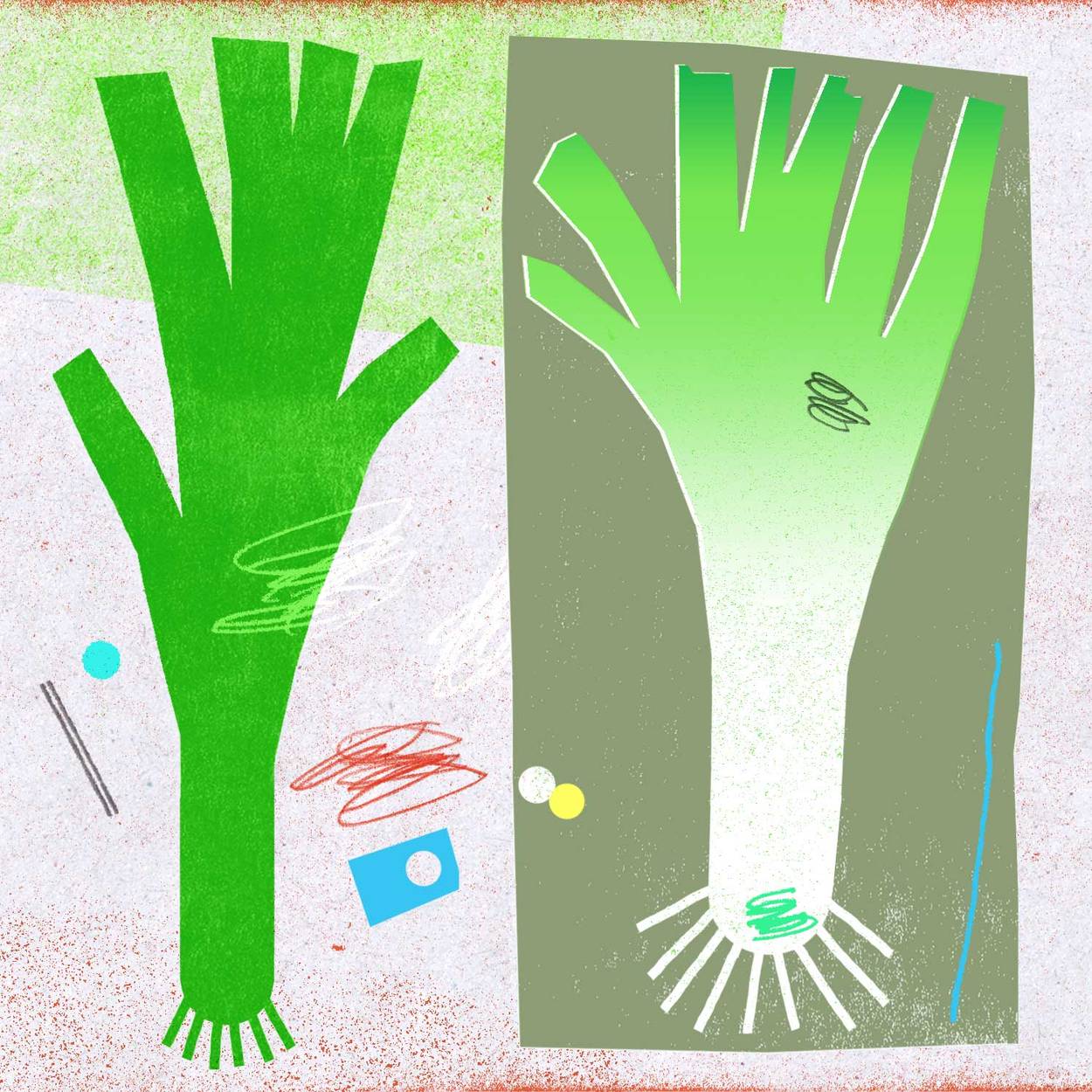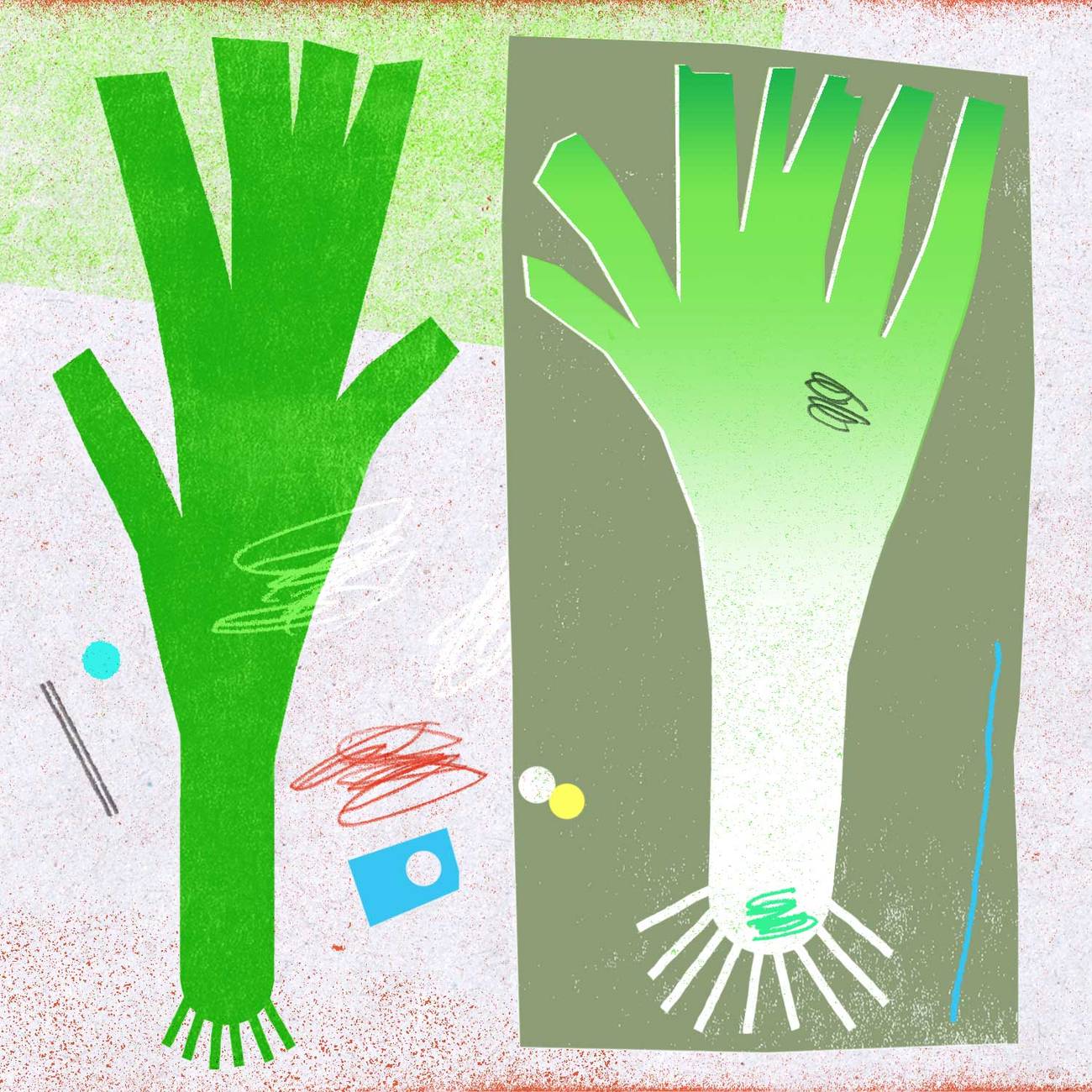For the Love of Leeks
These tasty vegetables have been part of Jewish cooking since the time of Moses




The ancient Egyptians were great lovers of leeks: They appear in many Egyptian wall paintings and carvings, while their remains were often found in Egyptian tombs. After Moses led the Israelites out of Egypt to Mount Sinai, they were said to miss leeks so much that it was written in the Bible (Numbers 11:4-5) that they wept and said, “We remember the fish we ate freely in Egypt, along with cucumbers, melons, leeks, onions, and garlic. But now our soul is dried away: There is nothing at all, besides this manna before our eyes.”
Egyptians—and the Israelites—weren’t alone in their tastes: Leeks were later enjoyed by the ancient Greeks and the Romans. Hippocrates, the ancient Greek physician, prescribed leeks as a cure for nose bleeds. According to ancient Roman naturalist Pliny, leeks were not only good for the voice, they also improved sexual pleasure and sleep. Roman Emperor Nero was so fond of leeks that he was nicknamed Porophagus (lit., the leek-eater); he also believed that leeks would strengthen his singing voice. In his Roman cookbook De re coquinaria, Apicius gives a variety of recipes with leeks, including green beans cooked with liquamen (a fermented fish sauce much loved by the Romans), olive oil, fresh coriander, cumin, and chopped leeks, as well as quinces stewed with leeks, honey, liquamen, olive oil, and defructum—a syrup made from cooked-down grape must. He also recommended serving leeks with cabbage, lentils, or dried peas. Leeks remained popular in the region for centuries. In Renaissance Italy, the food writer and physician Castor Durante wrote in his book Tesoro della sanità (Treasury of Health, published in Rome in 1586) that the consumption of leeks “facilitates menstruation … and cooked under ashes resolves headaches, removes drunkenness, improves the voice and makes women fertile.”
Part of the lily family—along with the onion, garlic, shallot, scallion, and chives—leeks (Allium porrum) are native to the eastern Mediterranean. The Romans introduced them to northern Europe. Legend has it that in the sixth century, the Welsh Saint David lived on a diet predominantly of leeks, which at that time were thought to be very healthy and good for purging the blood. It is also said that he ordered his soldiers to wear a leek in their helmets in a battle against the Saxons that took place in a leek field, probably to distinguish them from their opponents. Ever since, the leek has been one of the national emblems of Wales and is often worn on St. David’s Day. Some people say that Wales has been associated with leeks since the time of the Druids, who believed that leeks helped cure colds, eased some of the pain of childbirth, and kept away evil spirits. They also believed that if a young woman placed a leek under her pillow, she might dream of her future husband.
King Charlemagne insisted that leeks—one of his favorite vegetables—were grown throughout his empire. This resulted in their becoming widely used in the Ashkenazi cooking of the time, but less so in later years. Leeks also became one of the most widely used vegetables in the Sephardic kitchen, and appeared in all kinds of Sephardic soups, stews, casseroles, rissoles, croquettes, and savory pastries. They were also cooked with lentils, beans, or rice. As leeks have two growing seasons in the Mediterranean, they are often served by Sephardic Jews for Rosh Hashanah and for Passover. Some of the best-known Sephardic Passover dishes include fritada de prasa (a kind of souffle made with leeks, fresh white cheese, grated cheese, eggs, and soaked matzo), and albondigas de prasa (leek and potato croquettes with matzo meal). The Talmud also recommended eating leeks during Rosh Hashanah, as the Aramaic word for leek is karti (meaning “cut off”), to symbolize their enemies being “cut off” or removed.
Leeks have a mild taste similar to onions, but not as strong. Crisp and firm when raw, they become silky smooth when cooked. Except for the stem base and roots, all of the leek is edible, including the tougher dark green parts that are often discarded—a pity, as they are rich in vitamins and minerals. These dark green parts just need a little extra cooking time. Leeks can be added to soups, stews, pasta, or rice dishes, or they can be sauteed, combined with beaten eggs, and used to make omelettes. In France, they are often added to a bouquet garni. They are also an essential ingredient of vichyssoise—the well-known chilled soup made with pureed potatoes, onion, leeks, and cream. The French often dub leeks the “asparagus of the poor,” probably because they can be cooked the same way: boiled, steamed, or sauteed. Leek flowers are also edible and can be used as a garnish or in salads. Leeks need to be thoroughly cleaned before eating: After trimming away the ends and roots, cut them in half lengthwise, then run under cold water to remove any soil or grit that collects between the leaves.
Leeks have many health benefits. They are packed full of vitamins and minerals, especially vitamins C and A, carotenoids, and beta carotene, which are good for your vision, immunity, and reproductive system. They are also a good source of iron, copper, and vitamin K, which is needed for blood clotting. Leeks are loaded with antioxidants as well as kaempferol—a polyphenol that helps protect you against diabetes, cancer, and heart disease. Like garlic, leeks are also a good source of allicin, which is antimicrobial and thought to help lower your cholesterol.
Paola Gavin is a food writer and author of four vegetarian cookbooks including Hazana: Jewish Vegetarian Cooking. Follow her on Instagram @paolagavin and on Twitter @paolagavinfood.